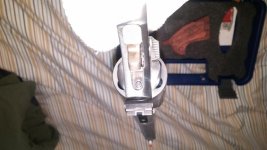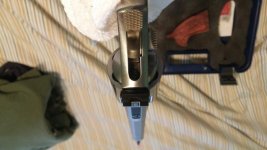tramblygoat
Member
Further points
I should have wrote 'side plate' and not 'slide plate'.
As someone else has already mentioned 'stoning' is not the local night life in the Middle East but rather the fine polishing (not removal) of the release points concerning the trigger. This is a fine science in itself and should be reserved for those who have more experience rather than new-commers to revolvers.
I also mention as someone else has already done that checking the screws to see they haven't slackened off is necessary. There are two screws in particular that often seem to slacken. The one on the side plate furthest forward that is connected to the cylinder crane and the other is the forward screw on the rear sight - not sure why that screw likes to come slack. On some of my guns I will use loctite on my screws but for my revolvers I haven't gone down that route yet. Someone else may wish to add his/her thoughts on that.
The books mentioned are good to have but I find that some are not detailed enough and others are dated in their presentation - somber, b&w photos etc. For me the books may be worth it when you have increased your knowledge and wish to go further- just my opinion.
Regards, Mark
I should have wrote 'side plate' and not 'slide plate'.
As someone else has already mentioned 'stoning' is not the local night life in the Middle East but rather the fine polishing (not removal) of the release points concerning the trigger. This is a fine science in itself and should be reserved for those who have more experience rather than new-commers to revolvers.
I also mention as someone else has already done that checking the screws to see they haven't slackened off is necessary. There are two screws in particular that often seem to slacken. The one on the side plate furthest forward that is connected to the cylinder crane and the other is the forward screw on the rear sight - not sure why that screw likes to come slack. On some of my guns I will use loctite on my screws but for my revolvers I haven't gone down that route yet. Someone else may wish to add his/her thoughts on that.
The books mentioned are good to have but I find that some are not detailed enough and others are dated in their presentation - somber, b&w photos etc. For me the books may be worth it when you have increased your knowledge and wish to go further- just my opinion.
Regards, Mark


